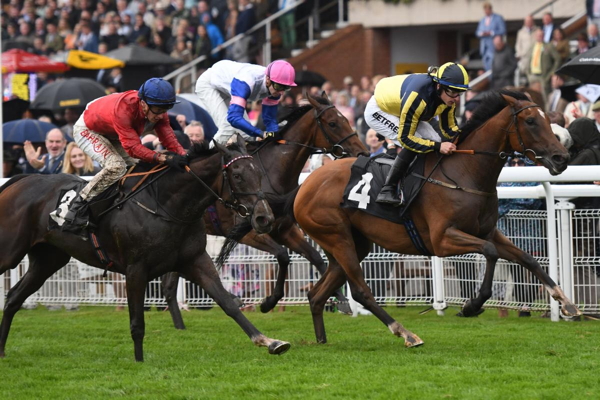 |
RacingBetter News |
| Wednesday 29th October 2025 | |
In-Play Betting Mastery Using Data and Instinct on British Race Days

In-play betting on British race days rewards calm preparation and decisive observation, with the strongest edge built before the stalls open. A disciplined plan frames every snap judgment once the tapes rise. Preparation sharpens instinct so that quick choices feel measured rather than impulsive. Each meeting offers its own pattern, shaped by track layout, weather, and field temperament. Success depends on spotting those signals clearly before others react.
The process is also shaped by where wagers are placed. The top betting sites UK punters can wager at provide competitive horse racing odds across diverse betting markets, fast payouts, and generous bonuses such as welcome rewards, free bets, and odds boosts. Access to these features supports the same discipline and responsiveness that define strong in-play betting, allowing focus to stay on the race rather than on platform delays or limited markets. The smoother the betting experience, the more attention can remain on reading pace, position, and movement.
Ground and layout matter more than many expect when markets turn volatile. Small rail movements can lengthen or shorten the home straight and magnify inside or outside advantages. On sharper tracks, a strong early gallop punishes leaders, while a steady tempo can gift front runners extra breath.
Use sectional data to steady your view when races turn messy. If early fractions are quicker than par, stay cautious on front runners and look for patient rides closing from midfield. When the pace is slow, note which horses have a turn of foot or save ground to strike late. Small shifts in tempo often decide outcomes.
Watch horse behavior and body language as the camera pans through the pack. A calm head carriage and smooth stride usually last longer than dramatic surges. Horses pulling or fighting restraints waste energy before it counts. Jockey habits also matter; some wait for gaps inside, others swing wide to keep rhythm. Track those patterns through the day and use them to judge tight finishes more clearly.
Market microstructure informs timing without becoming a compass that steers every choice. Watch ladders for liquidity pockets forming around whole numbers and visible queues that struggle to get matched. Treat the weight of money as a clue rather than a conclusion, and confirm with what the race is showing you.
Price swings often arrive in waves that reflect narrative rather than substance, especially after a conspicuous error or a missed beat. A runner who stumbles can settle and recover if the pace cools. Conversely, a stylish mid-race move can overextend a horse that meets a headwind or an uphill finish.
Seek asymmetric positions that survive small forecast errors. A back to lay on a habitual front runner can bank green when the field steadies behind an even tempo. A lay-to-back on a tearaway can pay when the cavalry closes into a rising final furlong.
Keep orders modest around tight turns where camera angles flatter the inside and hide outside momentum. Live pictures sometimes compress depth, making a three-wide attacker look further back than the GPS suggests. Let the next stride confirm the trend before reshaping liability.
Trainer intent belongs in your notebook, yet should never overpower what unfolds on turf or polytrack. A camp with recent winners may present a fitter horse, but paddock energy and pre-race sweats tell the story today. Treat every meeting as fresh evidence rather than a rerun of last month.
Weather can quickly alter the flow of a race, especially when showers hit a previously firm surface. Track how conditions shift in real time, whether kickback builds on the all-weather or the turf starts to loosen. After the first race on new ground, reassess which running styles adapt best and adjust your outlook accordingly. Staying contests reward patience and smart energy use, while sprint handicaps demand sharper instincts and a focus on repeatable traits like early speed or draw bias.
Keep detailed records of every decision so instinct sharpens through evidence, not memory. Review where you read the market and where it missed, especially the point where confidence changed. Over a season, these small insights compound. Pair them with disciplined staking that scales with volatility and keeps emotions steady through downswings. Each setup deserves the same clarity, even after a setback.
Use trusted data feeds while accepting that live play always contains noise. Let the numbers frame scenarios, then let the race confirm or deny them. The balance between preparation and feel creates a steady hand when prices flash and positions reshape.
British horse racing’s annual fixture list brings forth a wide range of challenges, from downhill sprints that reward bold speed to stiff finishes that expose weak stamina. Mastery comes from blending awareness of these conditions with precise timing, then acting only when both align. Over time, the craft feels smoother because the understanding beneath it grows stronger.
Treat every bet as a test that adjusts with new evidence, adding when the race confirms your read and cutting when it drifts. When instinct and data align, choices feel deliberate and outcomes clear. Set limits, step away when the plan ends, and return calm. Discipline lasts longer than any streak.







